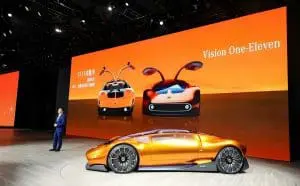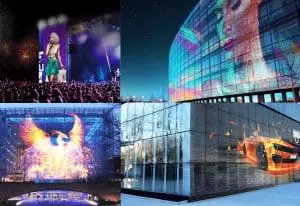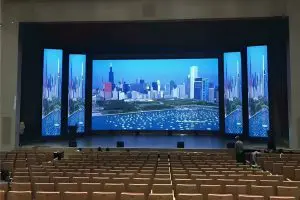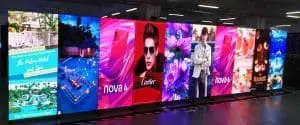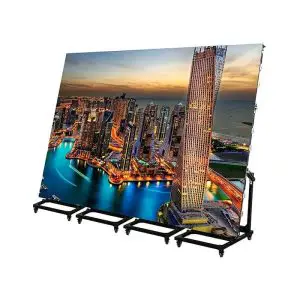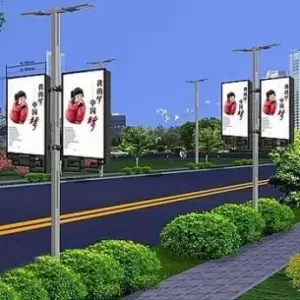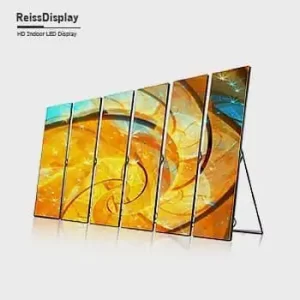Poster LED Screen: Ultimate Guide to Features, Benefits, Applications, Costs, and Buying Tips
A poster LED screen is an innovative digital display designed to replace traditional paper posters with dynamic, high-resolution visuals. These sleek, standalone screens are widely used in retail stores, events, airports, hotels, and other public spaces to showcase advertisements, promotions, and announcements. With their portability, vibrant content capabilities, and energy efficiency, poster LED screens are becoming a popular choice for businesses seeking to modernize their marketing strategies. The global digital signage market, including poster LED Displays, is projected to reach $35 billion by 2026, growing at a CAGR of 7.8% (source: MarketsandMarkets), driven by demand for interactive and cost-effective advertising solutions.
This guide explores the features, benefits, applications, types, technical specifications, costs, buying tips, installation advice, future trends, and frequently asked questions about poster LED Displays. Optimized for Google rankings with natural keyword integration and structured content, this article provides actionable insights based on industry data (e.g., Statista and Digital Signage Today). Whether you’re a retailer looking for the best poster LED Display for retail, comparing poster LED screen prices, or an event planner seeking indoor poster LED display screens, you’ll gain the knowledge to make informed decisions and potentially increase engagement by 30% (per Digital Signage Today studies).
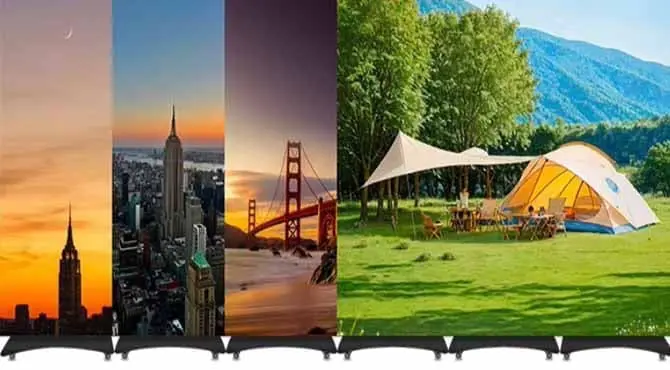
What Is a Poster LED Screen?
A poster LED screen is a slim, portable digital display that uses LED technology to present videos, images, animations, and text in a format similar to traditional posters but with dynamic capabilities. Unlike static paper signage, poster LED Displays allow real-time updates, making them ideal for high-traffic areas where content needs to change frequently. They are typically free-standing, wall-mounted, or floor-mounted, with sizes ranging from 43 inches to 75 inches, and are designed for indoor use with options for semi-outdoor durability.
The core of a poster LED screen involves high-density LED modules arranged in a thin panel, offering resolutions up to Full HD or 4K. Features like plug-and-play setup and wireless connectivity make them user-friendly. According to Statista, adoption of poster LED screens in retail has surged 40% since 2020, as businesses shift from printed materials to digital solutions that reduce costs and environmental impact. For example, brands like Nike use poster LED Display screens in stores to display interactive product demos, boosting customer interaction by 25%.
These screens are not just replacements for posters—they’re versatile tools for storytelling, with the ability to sync multiple units for larger displays or video walls.
Types of Poster LED Screens
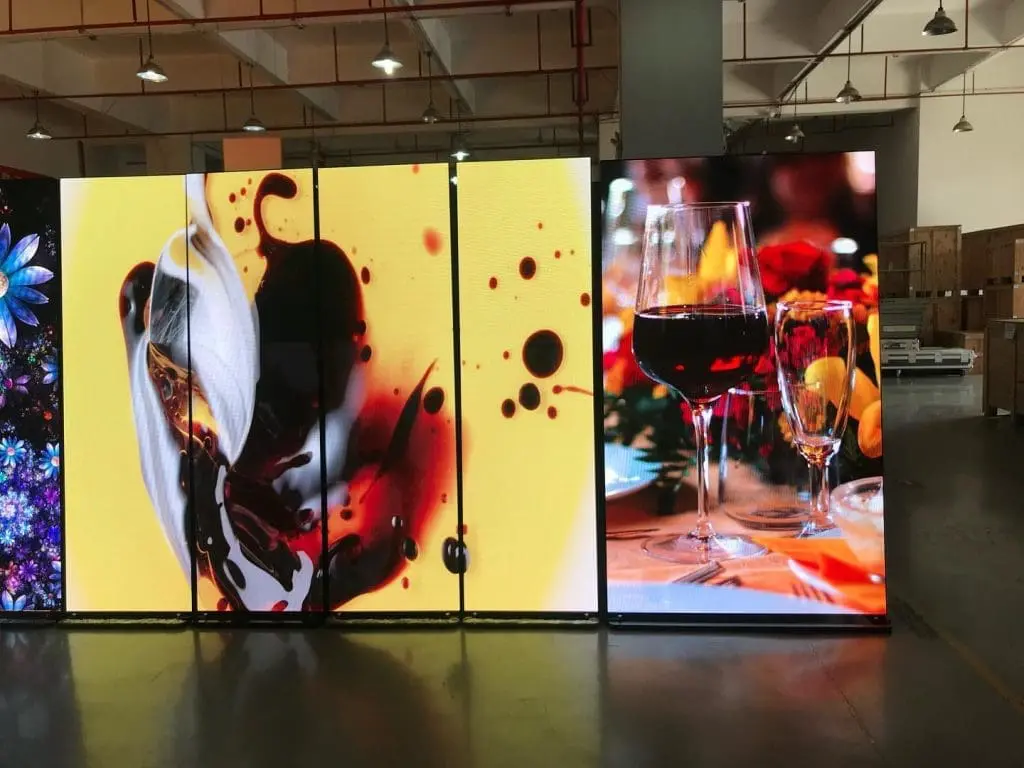
Poster LED screens vary by design, size, and functionality. Here’s a detailed overview to help you choose:
- Standard Indoor Poster LED Displays
Applications: Retail promotions or event signage.
Features: Slim aluminum frames; pixel pitches P1.8–P2.5 for sharp close-range views.
Best For: Fixed indoor setups with basic content playback. - Portable Poster LED Screens
Applications: Trade shows or pop-up events.
Features: Lightweight (5-10 kg) with wheels or handles; battery-powered options.
Best For: Mobile marketing where relocation is frequent. - Interactive Poster LED Displays
Applications: Customer engagement in stores or kiosks.
Features: Touch-sensitive surfaces; app integration for quizzes or menus.
Best For: Retail environments requiring user interaction. - Mirror Poster LED Displays
Applications: Fashion stores or hotels.
Features: Reflective surface that doubles as a mirror when off; activates for displays.
Best For: Space-saving, multi-functional use. - Outdoor-Ready Poster LED Screens
Applications: Semi-outdoor areas like patios.
Features: IP54+ weather resistance; higher brightness (1,500–2,500 nits).
Best For: Protected external spaces. - Synchronized Multi-Poster LED Screens
Applications: Video walls in lobbies.
Features: Daisy-chain multiple screens for seamless content.
Best For: Large-scale displays.
| Type | Pixel Pitch Range | Brightness (Nits) | Ideal Applications | Average Cost (USD) |
|---|---|---|---|---|
| Standard Indoor Poster LED Screen | P1.8–P2.5 | 800–1,200 | Retail, Events | $1,500–$2,500 |
| Portable Poster LED Screen | P2–P3 | 800–1,500 | Trade Shows | $1,800–$3,000 |
| Interactive Poster LED Screen | P1.5–P2.5 | 1,000–1,500 | Stores, Kiosks | $2,500–$4,000 |
| Mirror Poster LED Screen | P2–P3 | 800–1,200 | Fashion, Hotels | $2,000–$3,500 |
| Outdoor-Ready Poster LED Screen | P2.5–P3 | 1,500–2,500 | Patios, Entrances | $2,200–$3,500 |
| Synchronized Multi-Poster LED Screen | P1.8–P3 | 800–1,500 | Lobbies, Walls | $2,000–$4,000 (per unit) |
Key Features of Poster LED Screens
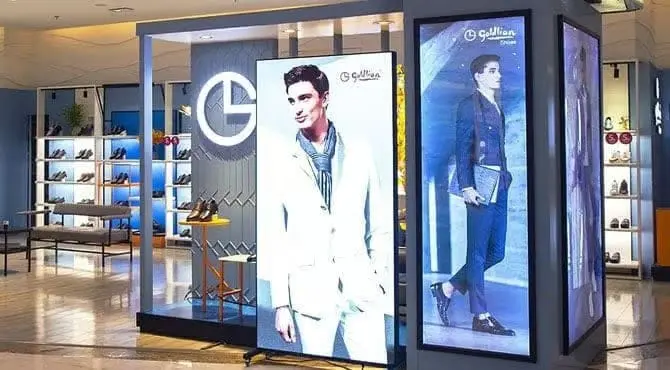
Poster LED screens are packed with user-friendly features:
- Slim and Portable Design: 3-5 cm thick; lightweight (5-15 kg) with handles or stands for easy mobility.
- High-Definition Visuals: Pixel pitches P1.5–P3 for sharp Full HD/4K resolution; vibrant colors (16 million).
- Plug-and-Play Functionality: Built-in media players support USB, HDMI, Wi-Fi; no complex setup needed.
- Dynamic Content Capabilities: Loop videos, animations, text; sync with apps for real-time updates.
- Energy Efficiency: Low power (50-150 W); auto-sleep modes reduce costs by 40%.
- Customizable Orientation: Portrait/landscape modes; mirror or split-screen options.
- Remote Content Management: Cloud-based CMS for updates from anywhere; supports scheduling.
- Durability: Scratch-resistant surfaces; some with IP54 for dust/spill protection.
These features make poster LED Displays versatile for modern marketing, with a lifespan of 50,000–100,000 hours.
Benefits of Poster LED Screens
Poster LED screens offer significant advantages over traditional signage:
- Attention-Grabbing Engagement: Dynamic content increases viewer retention by 35% (Nielsen).
- Real-Time Flexibility: Update promotions instantly, saving on printing (costs reduced 50-70%).
- Space-Saving Portability: Slim design fits tight spaces; easy to relocate for events.
- Cost-Effective Long-Term: No recurring expenses; ROI in 6-12 months via sales boosts.
- Versatility: Multi-format support for diverse industries.
- Eco-Friendly: Low energy and waste compared to paper posters.
- High Customization: Tailor content and orientation for branding.
- Durability: Withstand daily use in high-traffic areas.
Case: Starbucks uses poster LED screens for menu displays, increasing order values by 15%.
Applications of Poster LED Screens
- Retail Stores: Promotions and navigation.
- Events/Exhibitions: Schedules and branding.
- Hospitality/Restaurants: Menus and specials.
- Airports/Transportation: Info and ads.
- Public Spaces: Announcements and kiosks.
Case: CES trade show uses them for booths, enhancing visibility 40%.
Technical Specifications of Poster LED Screens
| Specification | Details |
|---|---|
| Pixel Pitch | P1.5–P3 |
| Brightness | 800–2,500 nits |
| Resolution | Full HD/4K |
| Refresh Rate | ≥1,920 Hz |
| Viewing Angle | 140°–160° |
| Power Consumption | 50–150 W |
| Lifespan | 50,000–100,000 hours |
| Weight | 5–15 kg |
How to Choose the Right Poster LED Screen
- Pixel Pitch: P1.5–P2 for close views.
- Brightness: 1,000+ nits for lit areas.
- Size/Orientation: Match to space.
- Connectivity: Wi-Fi/CMS for updates.
- Portability: Wheels for mobility.
- Budget: Factor in ROI.
Installation Guide for Poster LED Displays
- Planning: Choose location.
- Mounting: Wall or stand.
- Setup: Plug in and upload content.
- Testing: Check visuals.
- Maintenance: Clean bi-monthly.
Costs: $500–$2,000.
Costs of Poster LED Screens
Poster LED screen prices (2023): $1,500–$8,000 per unit. Interactive models higher. ROI in 6 months.
FAQ: Common Questions About Poster LED Screens
- What is a poster LED screen? Portable digital display for dynamic ads.
- How much does a poster LED screen cost? $1,500–$8,000.
- What is the best poster LED screen for retail? Interactive models with high res.









